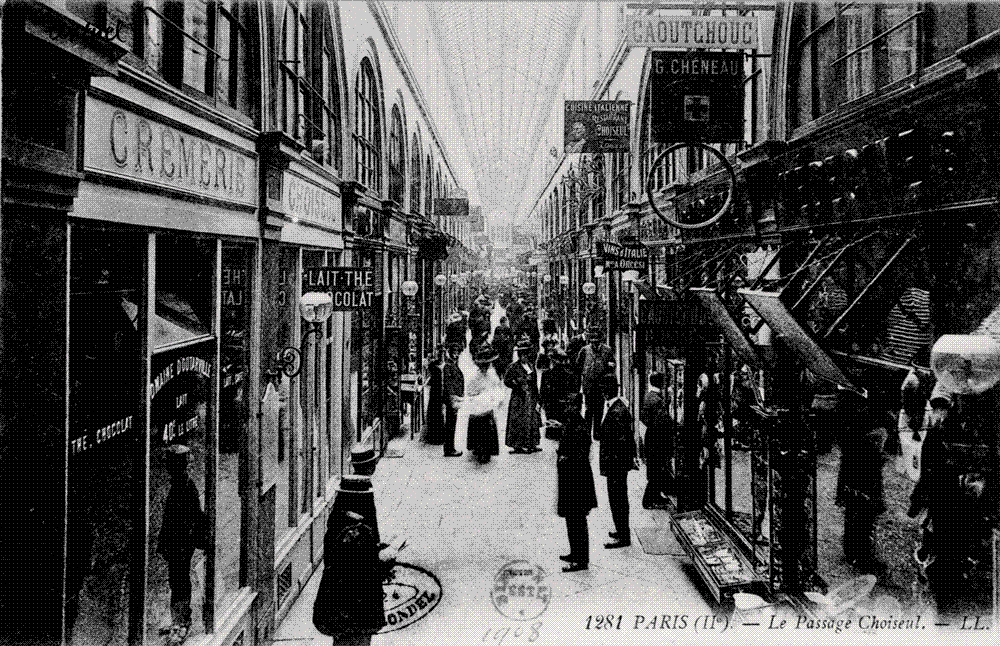Modernism and the Visual
A response to The Work of Art in the Age of Its Technological Reproducibility and the Dream World of Mass Culture
The thing that both Walter Benjamin’s article The Work of Art in the Age of Its Technological Reproducibility (2010) and Susan Buck-Morss’ primer to Walter Benjamin’s The Arcades Project titled Dream World of Mass Culture: Walter Benjamin’s Theory of Modernity and the Dialectics of Seeing (1993). have in common are how challenging of a read they are. It reminded me of the first time I read Jean-Paul Sartre’s novel Nausea in my twelfth grade English class, and how naïve and dumb it made me feel. Needless to say, I had to reread both of these articles multiple times and I still don’t think I fully comprehend them. However, the nuggets of information that I did glean from the texts were very interesting and relevant to my personal interests in both my practice of graphic design and design studies.
The Work of Art in the Age of Mechanical Reproduction
This article mainly deals with how the role and meaning of art has changed with the technological advancements of the industrial revolution and the advent of mass reproductions. Benjamin argues that before the invention of photography, the centre of the human experience of the world around them was their eye. But since your eye can only be in one physical location at a time, it’s visible world shifts with it as it walks. However, with the invention of photography — and quickly thereafter film — the camera becomes a new perspective for the human experience.
“Freed from the boundaries of time and space, [the camera has the capacity to] co-ordinate any and all points of the universe, wherever [it] want[s] them to be. [Its] way leads towards the creation of a fresh perception of the world. Thus [it can] explain in a new way the world unknown to you.”
— Dziga Vertov, (Berger, 1977, p. 17)1
1. I also supplemented Benjamin's work with John Berger’s Ways of Seeing (1977) to get a better understanding of his concepts. Sometimes you just need to hear something explained in two different ways for it to click.
Since it has the ability to transport its users anywhere at any time, mechanical reproduction essentially has the effect of democratizing access to art. Whereas before art could only be accessed through churches, galleries, or private collections — all of which access to could be controlled by the ruling classes (or bourgioise), and the artworks themselves could in turn be mystified in a manner reminiscient of a cult. After the advent of photography anyone could own their own copy of a work of art.
However, as Benjamin points this out in his article, it is important to recognize that these copies are just that; copies. We have the tendency view a photograph with the notion that it is an exact replica, a mechanical copy of reality. Yet it is important to recognize that the photographers’ unique perspective of their reality is what we are seeing through the image; not the actual reality that the image is attempting to capture. No matter what copies will never be the true thing itself. The copies lack the history and story that has followed the original work; they lack its certain uniqueness and permanence; they are lacking the works aura. It’s just as Walter Benjamin (2010) says, “[b]y replicating that which has been reproduced many times over, the technology of reproduction substitutes a mass existence for a unique existence.” (p. 14).

Throughout the piece it is also made evident that Walter Benjamin is very concerned with the potential that fascism has to use mechanical reproduction to appropriate art and aesthetics as a means of controlling the masses. And with the rise of the Nazi party in his home country, his concerns were certainly justified. In his piece Benjamin (2010) talks about his issues with cinema and how its “cult of the audience, reinforces the corrupt composition of the masses, with which fascism seeks to supplant their class consciousness.” (p. 24).
Later in the piece, Walter Benjamin (2010) goes further explaining that, “[a]ll efforts to aestheticize politics culminate in one point. That one point is war.” (p. 35). Looking at the aestheticization of the German Nazi party it isn’t that difficult to see how they utilized a visual language and cohesive aesthetic to organize and control Germany in the 1930s. Moreover, proving Benjamin’s previous point, the Nazi party used this aesthetic to go to war with most of the western world.
The Work of Art in the Age of Digital Reproduction
I found it actually really interesting to look at what Walter Benjamin was talking about when he wrote this article and compare it to the context of the current period that we find ourselves in. When Walter Benjamin was alive, people had to cope with their newfound mechanical means of reproduction and how it turned art into a more insubstantial and ephemeral thing; substituting a mass existence for a unique existence. Today, with our digital methods of reproduction, I feel like our generation is facing this question once again but to an even more extreme extent. While methods of mechanical reproductions were still very much a physical process that took time and resources to create, digital reproduction is literally as simple as the keystrokes cmd+c and cmd+v. We only have to look as far as the meme culture of the contemporary internet to see this struggle unfold.
Whereas the technology of mechanical reproduction substitutes a mass existence for a unique existence, the technology of digital reproduction has the capacity to substitute existence for a mass existence. Let me explain, although art that has been mechanically reproduced doesn’t have an aura, it still has a meaning to the owner of the copy. But in online meme culture, it has neither. Where previous generations had art for art’s sake, contemporary internet meme culture has reproduction for reproduction’s sake. The masses that enjoy memes squeeze all of the meaning that could come from the image out, until all that remains is an image who’s original meaning has been removed but not replaced.

In Walter Benjamin’s (2010) time he saw the, “The increasing proletarianization of present-day man and the increasing formation of masses are two sides of the same process. Fascism attempts to organize the newly arisen proletarian masses while leaving intact the production and property relations which they strive to abolish.” (p. 34). I feel that our time is quite similar. I have seen — nay as a transgender woman I have experienced — the increasing proletarianization of present-day women, people of colour, and lgbtq+ people, and their rapidly increasing formation into the masses. Furthermore I feel like I have seen how, especially online, a sort of neo-fascism has arisen with the attempt to organize our generations’ newly arisen proletarian masses of women, people of colour, and lgbtq+ people, with the sole goal of leaving intact the wealth, property, and power of the primarily cis white men which they strive to abolish. “It sees its salvation in granting expression to the masses — but on no account granting them rights.” (Benjamin, 2010, p. 34).

Dream World of Mass Culture: Walter Benjamin’s Theory of Modernity and the Dialectics of Seeing
While writing a summary of a summary of a written work may feel like a bad game of telephone, since the Arcades Project was one of the last works that Walter Benjamin worked on before he took his life in 1940 to avoid Nazi capture, writing a summary of the original work would take much more time due to it being a large unfinished and unedited record of the rise of capitalism.
2. This is essentially what phantasmagoria means. It was originally used to describe a specific type of spooky Victorian lightshow, but Karl Marx and other socialist writers appropriated it to describe the deceptive smoke and mirrors of commodification.
The Arcades were essentially one of the earliest versions of what we know today as a shopping mall. In a similar vein as the world expos like the Great Exhibition at the Crystal Palace in 1851, the Arcades were shaped around the spectacle of commodities for sale on display. According to Susan Buck-Morss (1993) Walter Benjamin saw the Paris arcades as, “The original temple of commodity capitalism,” (p. 309) or in more eloquent terms, “phantasmagoria of display” (p. 309). This tells us, as readers, what Walter Benjamin’s opinions of the Parisian arcades were when he was writing them. Nobody refers to something that they like as a horrific nightmarish dreamscape.2 Yet his reasoning behind his use of phantasmagoria was sound. There is a certain undeniable perversion to inviting the members of the working class to visit world expos and the arcades when they cannot afford the commodities on display.
What really struck me about this article — as well as the other Walter Benjamin piece — is just how naive his predictions were. While there is no doubt that his thought process was sound, he massively underestimated the thrall of capitalism. He saw capitalism as the creator of the circumstances for the rise of the proletariat, however from a contemporary perspective it seems as if the opposite has happened. With the monetization of the Internet, the phantasmagoric orgy of the superficial that Benjamin hated so much about the Paris arcades has attached itself to us in an almost parasitic way; through our smartphones, the little arcade displays in each of our pockets.

Going further, you can’t even walk around the city without being bombarded by advertisements competing for your attention. And honestly in my opinion, we as a society have become so accustom to the overt fetishization of commodities in the world that we don’t even notice it anymore. I’m not going to lie, anytime I see a pretty advertisement in the Toronto subway station, I stand and oogle at the product on display. I can’t help it; I’ve been inoculated.
3. Pure unadulterated socialism is too utopian, which unfortunately means it is — in my opinion at least — way too easy to abuse and ruin.
This is not a good thing; at least it isn’t in my opinion. While I don’t think that we should get rid of advertising altogether; I actually think that the true solution is finding a balance between socialism and capitalism.3 I do think that there is definitely something wrong when everytime I go back up north to my small hometown I get a sense of relief. My smartphone is out of service range, and the in-your-face advertisements of the city are nearly non-existent.
- Benjamin, W. (2010). The Work of Art in the Age of Its Technological Reproducibility [First version] (M. W. Jennings, Trans.). Grey Room, 39, 11-37.
- Berger, J., Dibb, M., & BBC Enterprises. (1972). Ways of seeing. London: BBC Enterprises.
- Buck-Morss, S. (1993). Dream world of mass culture: Walter Benjamin’s theory of modernity and the dialectics of seeing. In D. M. Levin (Ed.), Modernity and the hegemony of vision (pp. 309-338). Berkeley: University of California Press.
- Mathey, F. (1956). Van Gogh: Auvers-sur-oise. France: J. Monnier Clichés Perrot et Griset.
Bibliography